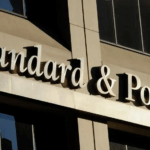
Ratings agency Standard & Poor’s (S&P) has cautioned that Ghana’s economy remains vulnerable to external shocks despite showing signs of stability in recent months.
“In our view, notwithstanding stronger recent economic outturns, Ghana’s economy remains exposed to risks from commodity price fluctuations and broader external and weather-related shocks,” the agency noted in its latest report on Ghana.
The report follows S&P’s decision to upgrade Ghana’s sovereign credit rating to B-/B with a stable outlook, citing improved fiscal performance and a better balance of payments position.
S&P, however, warned that the durability of Ghana’s fiscal reforms remains untested.
“We are worried, especially during future election cycles, which in the past have coincided with large increases in public spending in Ghana,” the agency said.
It highlighted the country’s recurrent weak fiscal performance, particularly around elections, “when public spending was frequently increased at a pace significantly exceeding revenue growth and underpinning a steady rise in net general government debt, ultimately leading to Ghana defaulting on its obligations in December 2022.”
On the exchange rate, the agency expressed concern about the potential impact of volatility on government debt, noting that “over 50% of public debt is denominated in foreign currency, and exchange rate movements have a material impact on Ghana’s debt-to-GDP ratios.”
Despite these risks, S&P projected a more positive outlook for the economy.
The agency revised Ghana’s growth forecast from 4.5% in May to 6.0%, citing strong commodity prices and government measures to support recovery through improved macroeconomic conditions, including a more stable cedi and declining inflation.
S&P expects inflation to fall below 10% from 2026 and remain within the Bank of Ghana’s target band of 6%–10% through 2028.
“We think inflationary pressures will remain lower compared with those in recent years as the credibility and effectiveness of monetary policy are improving following years of sizable fiscal deficit financing,” the report stated.
The agency concluded that anchoring inflation expectations will depend largely on exchange rate stability, which has been volatile in recent years.